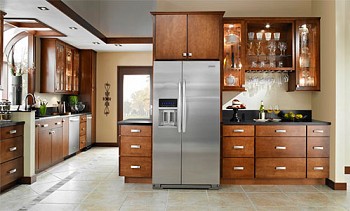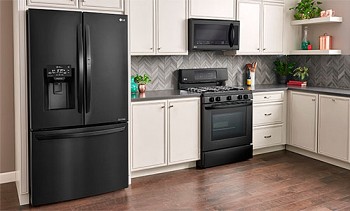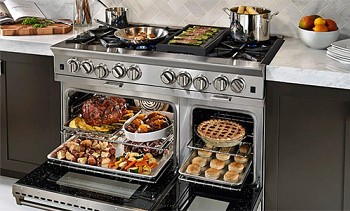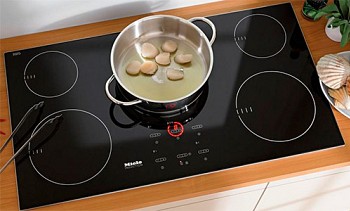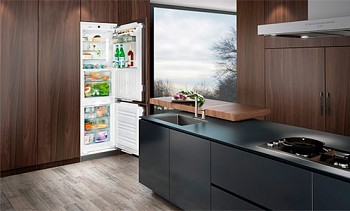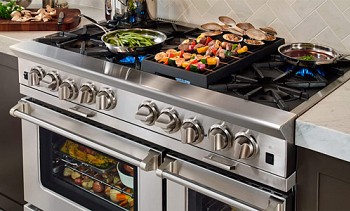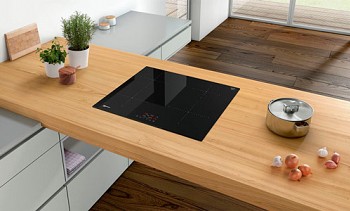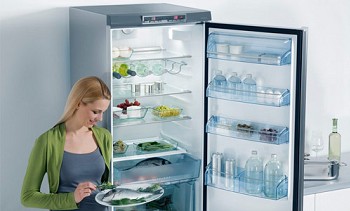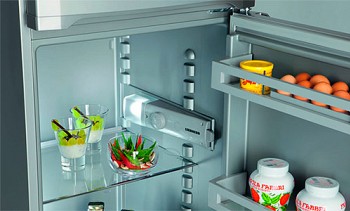The self-assembled tablecloth delighted the fairy-tale characters not only with the ability to instantly set the table, but also quickly remove all the dirty dishes - for this, the tablecloth simply collapsed. Oven manufacturers, although they could not fully repeat this “technology,” but still made life easier for customers of their products by introducing various cleaning methods into the design of the ovens.
The most common are pyrolytic, catalytic or hydrolysis, and now, choosing an oven, you also have to decide which oven cleaning is better, because each method has its own advantages and disadvantages.
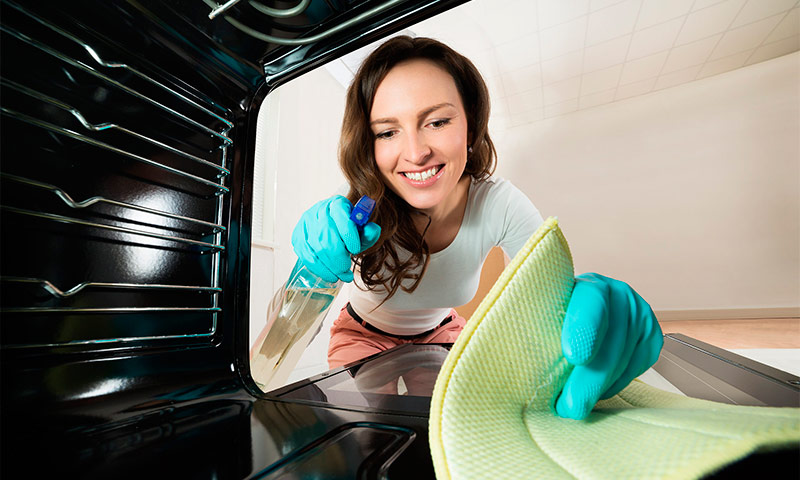
Content:
Pyrolytic oven cleaning
The term "pyrolysis" in scientific language stands for thermal separation of organic and inorganic chemical compounds, resulting in the formation of ash and gaseous compounds. This term consists of two ancient Greek words: Pyr (πῦρ) - fire, heat, bonfire and Lysis (λύσις) - decay, decomposition, stratification. In simple words, the essence of pyrolytic cleaning means the combustion of any pollution that could have formed on the walls of the oven.
The pyrolysis method is still the most perfect of all existing, and an oven equipped with such functionality can be safely classified as a Mercedes class among ovens. The fact is that the use of elevated temperature automatically means the use of more durable and stable materials.
Every housewife knows that the preparation of the bulk of baking requires a temperature of 180-250 ° C, which means that pyrolysis should be carried out at much higher values, for which standard ovens are simply not designed. Basically, most pyrolytic reactions occur at a temperature of about 500 ° C, although some oven manufacturers were able to “force” this function to work at 300 ° C, but this is not pyrolysis in its pure form, but only part of a multi-level cleaning system.
Since cleaning is carried out at high temperature, all such ovens are equipped with additional thermal protection for the door and the cabinet so that their outside temperature is as low as possible. They also have a locking mechanism that does not allow you to open the door while the temperature inside is above two hundred degrees.
Carrying out the cleaning itself should not be difficult for anyone: all baking sheets are removed from the oven (some models do not need to do this either - the stands are also made of heat-resistant metal and can be cleaned in this way), the door closes and the self-cleaning mode is activated. When the pyrolysis process is completed, it is necessary to wait a while to allow the oven to cool, after which the ash formed is simply brushed off with a brush or rag.


+ The advantages of the pyrolytic cleaning method
- This is in the full sense of the word "self-cleaning the oven" without human intervention - all that is required is to start the pyrolysis, and then remove the ashes.
- It is almost impossible to get a bad oven with a pyrolysis system - they use only high-quality crucible steel. Other materials will give themselves out even during the warranty period: the oven will simply “lead” - it will change its shape due to thermal expansion.
- The entire inner surface is cleaned, including the most inaccessible areas - even if the ashes from there do not fall to the bottom, then it will simply be blown out.

- Disadvantages of the pyrolytic cleaning method
- The use of quality materials proportionally increases the cost of the oven.
- Cleaning is carried out separately from cooking. This means a loss of time and additional energy consumption.
- The power of ovens with a pyrolysis system is higher than usual, so for it, in any case, you will have to maintain a separate line, designed for at least 6 kW.
- During pyrolysis, a large number of gaseous decomposition products are formed, for the removal of which a good ventilation system is needed.
- Despite the high-quality thermal protection, the surface of the oven and the door itself heats up quite a lot. Although their temperature does not exceed 70-80 ° C, this is quite enough to get burned, especially to a child. Therefore, it is advisable that no one is in the kitchen during the pyrolysis cleaning of the oven.
Catalytic cleaning of the oven
When using this method, the effectiveness of the technology used and the cost of its application are combined. It has become widespread, since it does not require serious complication of the design of ovens, and at the same time gives a fairly good result.
The whole secret lies in the enamel coating the walls of the oven, which contains a catalyst - an active component that decomposes fats into soot and water at temperatures from 150 ° C and above. This means that the cleaning process takes place automatically, right during cooking. It is quite easy to recognize an oven equipped with a catalytic cleaning system by running your hand inside the heating chamber - panels coated with rough-to-touch enamel are strengthened on its surface.
Actually, this is the principle of operation of the catalytic method of cleaning - when fat is sprayed inside the oven during cooking, it gets on the panel and lingers on their rough surface. Since the surface of the oven is already heated to the desired temperature, a catalytic reaction begins, which ends even during this cooking or will be continued at the next one. Some manufacturers integrate several cleaning modes into the ovens - after cooking, you can turn on the extra at elevated temperatures.
In terms of efficiency, there is no doubt which type of oven cleaning is better - the catalytic one is clearly inferior to pyrolysis, but it is cheaper and in any case greatly facilitates the task of maintaining the cleanliness of the oven. In addition, manufacturers are constantly improving the materials used and the latest catalytic cleaning systems have a much longer service life and require less human participation in cleaning the oven.


+ Advantages of the Catalytic Cleaning Method
- The cleaning process itself occurs unnoticed - it starts automatically during the operation of the oven.
- The cost of ovens with a catalytic cleaning method is within the golden mean and they are quite affordable for the user with an average income.
- Long service life of panels with catalytic enamel - even with intensive use they last for 5 years. In addition, you can find double-sided panels, which after working out on one side can be turned over and used further.
- Availability of accessories - when over time you have to replace enameled panels, they are easy to find: in service centers or stores. Here, if necessary, you can order their installation, if there is no desire to carry out the replacement yourself.
- This cleaning method can be used in electric and gas ovens.

- Disadvantages of the catalytic purification method
- Catalytic enamel begins to deteriorate when interacted with sugar or milk. Since during the preparation, for example, baking, the filling can drip from the baking sheet to the bottom of the oven, the panels with the catalyst are fixed only on the side and back walls.
- Panels with catalytic enamel cannot be cleaned with abrasive detergents or a hard cloth - they will erase the enamel from the surface.
- Although the panels with enamel are quite durable, but still after some time they will need to be changed.
- In the case of severe contamination of the surface, its cleaning will have to be repeated several more times.
Hydrolysis Oven Cleaning
Most likely, this simple but quite effective cleaning method is a popular invention, because every housewife who had to wash dried mud from dishes is familiar with it. The essence of the method is the preliminary softening of fats that have fallen on the walls of the oven, for which water vapor is used. To do this, just take one or two containers of water and are installed inside the oven. Then the oven warms up to 50-90 ° C and after 30-40 minutes it will be much easier to clean greasy spots or the filling from the pies that has accumulated on the bottom of the oven.
In fact, oven manufacturers did not invent a bicycle, but simply made a recess in the ovens at the bottom where water can be poured, added a timer for 30-40 minutes and said that such ovens were equipped with a hydrolysis cleaning system. Additionally, for such ovens, they began to sell cleaning products that help soften fats and burned dough under the influence of hot steam.
To the credit of the manufacturers, they did not stop there - it is unlikely to improve the cleaning method itself, but the enamel for the walls of the ovens is gradually improving. Its acid resistance is increased, and a flat and smooth surface has a molecular structure, which prevents the penetration of fat particles into it.


+ Benefits of Hydrolysis Cleaning Method
- Extreme profitability - only water and a little detergent are needed. The cost of electricity is minimal, since there is no need to heat the oven to a high temperature.
- Safety - there is no overheating and danger of getting burned.
- Despite the simplicity and obviousness of this solution, it significantly improves the cleaning efficiency.

- Disadvantages of the hydrolysis purification method
- Complex pollution will still have to work hard.
- Separate time is required for cleaning. In this case, the oven should be cooled after cooking.
- The method even with a stretch cannot be called automatic - rather, it is simply a simplification of manual cleaning.
Comparison of oven cleaning systems
 |  |  | |||||||
|---|---|---|---|---|---|---|---|---|---|
| Pyrolytic cleaning | Catalytic purification | Hydrolysis cleaning | |||||||
| Cleaning principle | Any pollution, under the influence of high temperatures, turn into ashes | Under influence catalysts located in the walls of the oven, fat breakdown occurs |
Steam is softened by steam. | ||||||
| Electricity consumption | High | Average | Not big | ||||||
| Temperament | Up to 500 0FROM | 140 - 250 0FROM | 50 - 90 0FROM | ||||||
| Cleaning frequency | As needed | After each cooking | After each cooking | ||||||
| Cleaning efficiency | Deletes both fresh and old pollution | Removes fresh dirt | Helps soften contaminants | ||||||
| The need for consumables | Not | Catalytic panels | Water | ||||||
| Use of detergents for final cleaning | Not necessary | Necessary | Necessary | ||||||
| Oven cost | High | Average | Low | ||||||
These are all the basic ways how to keep ovens clean, the principle of their operation, advantages and disadvantages. But to determine what type of oven cleaning is better, in each case it will be necessary independently, depending on the desire to save money when buying an oven, electricity during its operation or time for cleaning.

